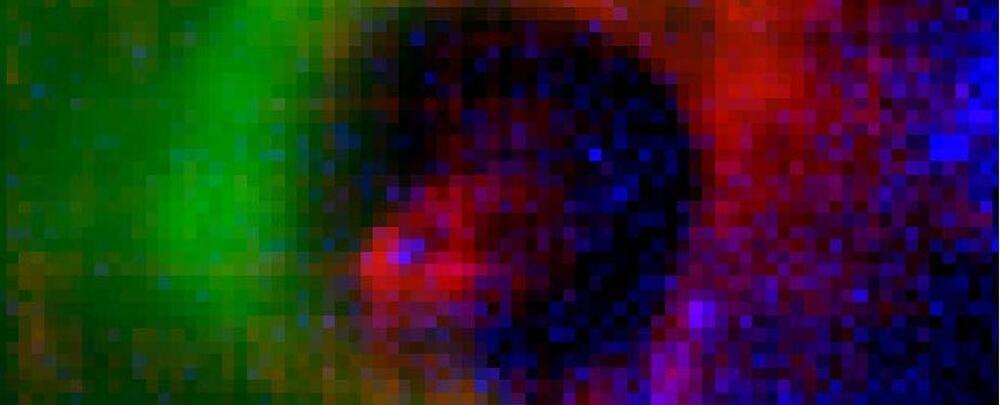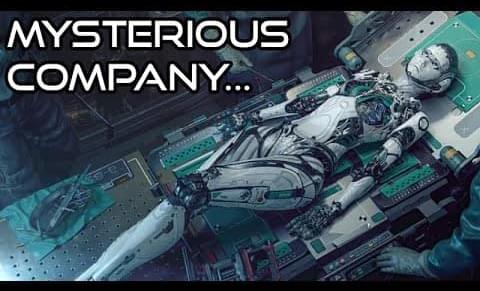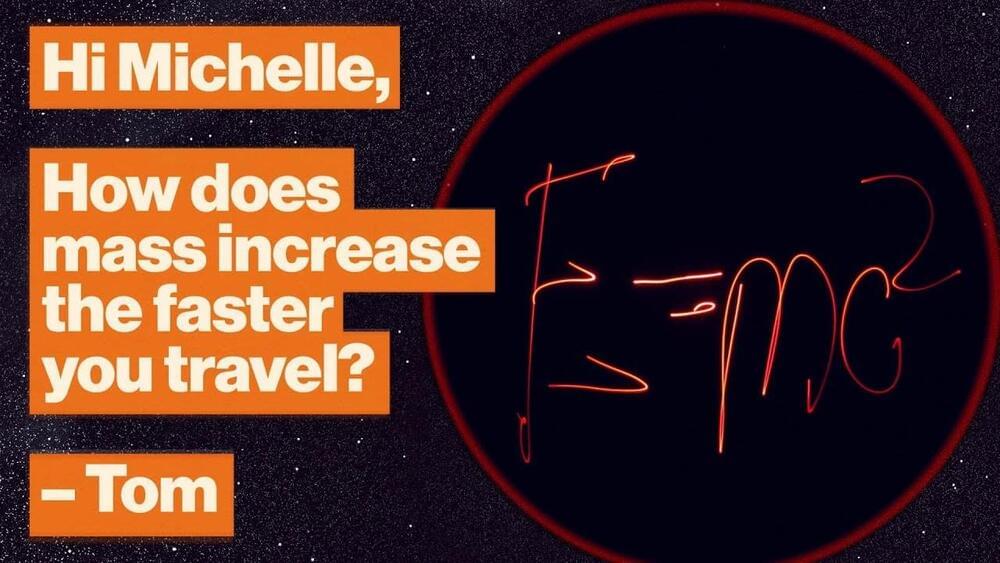A ring looping around the icy dwarf planet Quaoar is located much farther from its parent body than scientists thought was possible.
Dramatic advances in quantum computing, smartphones that only need to be charged once a month, trains that levitate and move at superfast speeds. Technological leaps like these could revolutionize society, but they remain largely out of reach as long as superconductivity—the flow of electricity without resistance or energy waste—isn’t fully understood.
One of the major limitations for real-world applications of this technology is that the materials that make superconducting possible typically need to be at extremely cold temperatures to reach that level of electrical efficiency. To get around this limit, researchers need to build a clear picture of what different superconducting materials look like at the atomic scale as they transition through different states of matter to become superconductors.
Scholars in a Brown University lab, working with an international team of scientists, have moved a small step closer to cracking this mystery for a recently discovered family of superconducting Kagome metals. In a new study, they used an innovative new strategy combining nuclear magnetic resonance imaging and a quantum modeling theory to describe the microscopic structure of this superconductor at 103 degrees Kelvin, which is equivalent to about 275 degrees below 0 degrees Fahrenheit.
Top 10 upcoming future technologies | trending technologies | 10 upcoming tech.
Future technologies are currently developing at an acclerated rate. Future technology ideas are being converted into real life at a very fast pace.
These Innovative techs will address global challenges and at the same time will make life simple on this planet. Let’s get started and have a look at the top technologies of the future | Emerging technologies.
#futuretechnologies #futuretech #futuristictechnologys #emergingtechnologies #technology #tech #besttechnology #besttech #newtechnology #cybersecurity #blockchain #emergingtech #futuretechnologyideas #besttechnologies #innovativetechs.
Artificial Superintelligence or short, ASI, also known as digital superintelligence is the advent of a hypothetical agent that possesses intelligence far surpassing that of the smartest and most gifted human minds.
If we as a species manage not to destroy ourselves up until the advent of true artificial general intelligence, the moment of the next phase for our survival in a post AGI world, will be even more paramount.
The consensus among AI experts is that the time it takes to go from AGI or artificial general intelligence to ASI or artificial superintelligence, is exceptionally shorter than the time it takes to achieve AGI from current narrow artificial intelligence systems.
So we really have only one try to make it right.
Have you ever thought about what the world will look like in the future? and the type of technology that we will have? The technology that’s created is very fascinating. Comment your thought on this and please share.
If you like this video check out.
👉 Have They Discovered Earth 2?
https://youtu.be/gZMaGB8PSZw.
👉 What Will 2030 Look Like? ***Amazing***
Discover how a binary pair of T Tauri stars created a giant bubble in the Barnard 18 molecular cloud. Learn about the significant impact of these young stars on their surroundings, read on now!
Check out all the on-demand sessions from the Intelligent Security Summit here.
Hyperbole aside, we have only scratched the surface of what the new technology may eventually become. ChatGPT has the markings of artificial narrow intelligence (ANI). That is, AI that is designed to perform specific tasks.
The first signs of life emerged on Earth in the form of microbes about four billion years ago. While scientists are still determining exactly when and how these microbes appeared, it’s clear that the emergence of life is intricately intertwined with the chemical and physical characteristics of early Earth.
“It is reasonable to suspect that life could have started differently—or not at all—if the early chemical characteristics of our planet were different,” says Dustin Trail, an associate professor of earth and environmental sciences at the University of Rochester.
But what was Earth like billions of years ago, and what characteristics may have helped life to form? In a paper published in Science, Trail and Thomas McCollom, a research associate at the University of Colorado Boulder, reveal key information in the quest to find out. The research has important implications not only for discovering the origins of life but also in the search for life on other planets.
A rather mysterious AI startup is claiming to be working on the smartest Robot AI ever made which could even rival humans in some areas. The company is called Sancutary and is a direct competitor to the soon-to-be announced Tesla Bot Optimus. It’s pretty obvious the AI and Robot Race is heating up with more awesome and crazy technology coming out very quickly.
–
TIMESTAMPS:
00:00 The most mysterious AI Company.
02:28 What is Sanctuary?
05:16 Most human Robots.
08:04 Last Words.
–
#robots #ai #agi
New videos DAILY: https://bigth.ink.
Join Big Think Edge for exclusive video lessons from top thinkers and doers: https://bigth.ink/Edge.
The only things that travel at the speed of light are photons. Nothing with any mass at all can travel at the speed of light because as it gets closer and closer to the speed of light, its mass increases. And if it were actually traveling at the speed of light, it would have an infinite mass. Light does not experience space or time. It’s not just a speed going through something. All of the universe shifts around this constant, the speed of light. Time and space itself stop when you go that speed.
MICHELLE THALLER: Dr. Michelle Thaller is an astronomer who studies binary stars and the life cycles of stars. She is Assistant Director of Science Communication at NASA. She went to college at Harvard University, completed a post-doctoral research fellowship at the California Institute of Technology (Caltech) in Pasadena, Calif. then started working for the Jet Propulsion Laboratory’s (JPL) Spitzer Space Telescope. After a hugely successful mission, she moved on to NASA’s Goddard Space Flight Center (GSFC), in the Washington D.C. area. In her off-hours often puts on about 30lbs of Elizabethan garb and performs intricate Renaissance dances. For more information, visit.
NASA.
TRANSCRIPT: MICHELLE THALLER: So, Tom, you asked the question, “How does mass increase as you go faster?” And this is really a wonderful part of Einstein’s theories. It actually is also relatively slippery and kind of complicated because to even answer this question at all, we have to ask the rather strange question: “What do you mean by mass? What is your definition of mass?” You may have heard that nothing with mass can possibly go at the speed of light. The only things that travel at the speed of light are photons pure energy, light, the speed of light. Nothing with any mass at all can travel at the speed of light because as it gets closer and closer to the speed of light, its mass increases. And if it were actually traveling at the speed of light, it would have an infinite mass. So think about that. Even if you had a tiny little particle that was, say, billions of times less massive than an electron just a tiny, tiny little piece of mass if for some reason, that tiny thing accelerated to the speed of light, it would have an infinite mass. And that’s a bit of a problem. So let’s talk about this. One of the things that you really have to realize is the speed of light is very, very special. It’s not just simply a speed of something moving through space. As you go faster and faster and closer to the speed of light, time itself begins to slow down. And space begins to contract. As you go close to the speed of light, the entire universe becomes smaller and smaller until it basically just becomes a single point when you’re going at the speed of light. And time, as you go closer to the speed of light, gets slower and slower until basically time is a single point at the speed of light. Light does not experience space or time. It’s not just a speed going through something. All of the universe shifts around this constant, the speed of light. Time and space itself stop when you go that speed. So the reason you can’t accelerate to the speed of light, and the reason we say you have an infinite mass is a little complicated because the idea that mass actually is a measurement of energy. You may remember Einstein’s famous equation, E equals MC squared. Energy equals mass times the speed of light squared. Energy and mass are equivalent. Mass is basically a measurement of how much energy there is in an object. When you’re moving, you have the energy of your motion, too. That’s called kinetic energy, energy of motion. So E equals MC squared, now your mass has not just the stuff that’s in you but also the energy of your motion. And that’s why mass seems to increase as you go faster, and faster, and closer to the speed of light. It’s not that you are actually getting any heavier. The increase in mass is something that’s only observed by people that are watching you go by. If you were on a spaceship going very fast at the speed of light, you don’t notice anything getting heavier. You are on your spaceship. You could jump up and down. You can skip rope. You can do whatever you want. You don’t notice any change at all. But if people try to measure your mass as you go by, they not only are measuring your rest mass — your mass when you were still — but this added energy of this h…For the full transcript, check out https://bigthink.com/videos/speed-of-light









